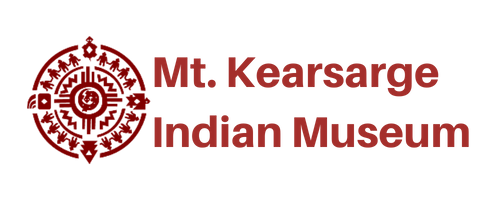Powwow Sights, Sounds, and Expectations
Powwow Players & Role
Emcee
The Emcee is the voice of the powwow. Throughout the day, the emcee announces activities taking place all over the powwow grounds as well as information regarding dance styles and dance arbor protocols. The emcee confers with the host drum and announces the dances and also filters all requests for honoring or special dances and songs to ensure the smooth pace of the powwow.
Head Dancers
Head dancers are selected one year in advance of the powwow. During that year, the dancers will prepare a giveaway to acknowledge the honor they have received. Responsibilities during the powwow include starting every dance or waving participants on to start without them. No dancer may start dancing before the head dancers.
Arena Director
The arena director is in charge of maintaining the circle for dancing. The arena director will help dancers get in order for grand entry and settle any disputes within the circle. Throughout the weekend, the arena director will also ensure that all dancers are dressed appropriately and being respectful within the circle.
Drum Styles
The songs sung by the drums at the powwow are an integral part of Native culture. Many of the songs today use vocables instead of words. Since many of the powwows in the area are Intertribal (attended by singers and dancers from tribes throughout the US and Canada), vocables are sometimes used to avoid offending those who may not know the language it was originally performed in. In other cases, the original words have been lost to time and only the notes have been passed down through the generations. Within the songs, there are a series of loud beats referred to as honor beats. In some traditions, these beats represent gunshots and are placed to honor warriors and ancestors that have gone before us. Each song begins with the lead singer starting the song (or a lead) and he is echoed by the rest of the drum. The song is repeated four to six times and each repetition is referred to as a push-up. While women do not sit at the drum in most traditions, they will often stand behind the men where they sing an octave higher and their voices can carry above and complement the deeper tones of the drum and the men singers.
Northern songs originated from the Great Plains and Great Lakes regions of the US and Canada. They are identified by a higher pitch than the Southern style and will place Honor Beats in the second half of the push-up. The song is most often ended with three loud beats.
Southern singers have songs based in the area around Oklahoma and the southern parts of the United States. The lower pitch of their songs sets them apart from northern singers as well as the three honor beats in the middle of their push-up. Southern songs will often end with five loud beats.
Powwow Etiquette
Listen to the Emcee as he will tell you when to stand and sit after honoring songs. He will also announce intertribal dances and other important information.
Please ask singers and dancers before taking their photos. If the Emcee announces that no photos are to be taken, please respect this request. An emcee will make this request during a sacred honor song or dance. We ask that you respect this very important part of our Native tradition.
Do not sit on someone else’s blanket unless you are invited. Please note benches within the circle are reserved for the Dancers and seating under the tent is reserved for elders.
Please do not refer to a dancer’s attire as a costume. The correct term is regalia. Regalia is sacred to that dancer, often passed down through a family or given to honor someone. A dancer’s regalia is an important part of his or her identity and culture.
Do not touch a dancer’s regalia. These items are often handmade and are often gifts to the dancers from friends and family. They have deep significance and should be treated with reverence.


